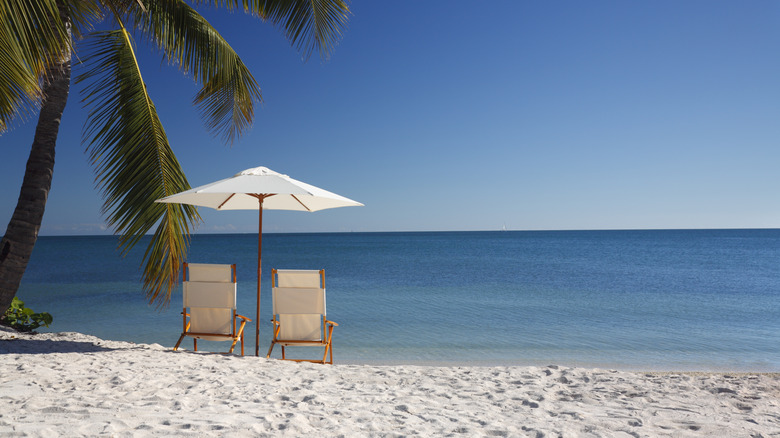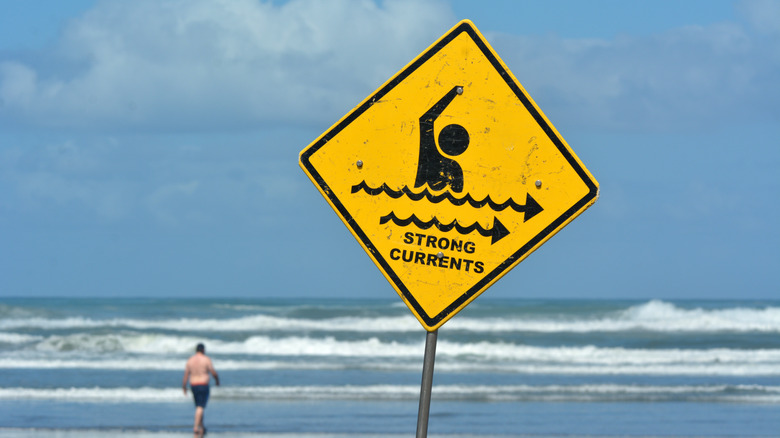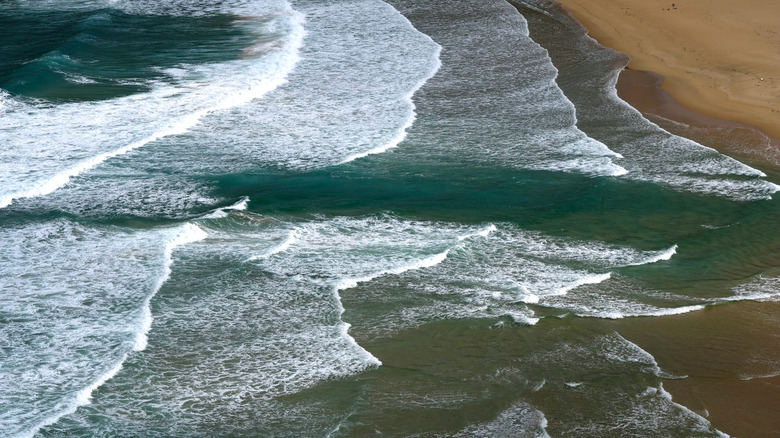This Popular Florida Beach Is One Of The Most Dangerous Swimming Destinations
Florida is the go-to family and spring break vacation destination for most people living in the contiguous United States. However, it seems that there is something dangerous lurking in the waters of the Sunshine State — and not it's not sharks (although if you want to learn more about these ocean predators, you can read our article on the 15 types of sharks ranked by danger level). Instead, the most dangerous things lurking in Florida's waters are rip currents. In fact, North Beach in Miami was ranked by Savoteur in 2023 as the United State's most dangerous beach. The reason that North Beach received the top spot was due to the high incidence of strong rip currents that occur there. Miami's South Beach also ranked eighth on the list for the same reason.
However, these popular Miami beaches are not alone in the Sunshine State. In fact, according to data collected by the National Weather Service, Florida takes first place with regard to the U.S. state with the highest number of rip current deaths — and by a long shot. Between 1995 and 2008, Florida reportedly experienced 230 rip-current-related deaths, whereas the second-place state of California only experienced 56 deaths during the same period.
What conditions make rip currents more likely?
Rip currents are dangerous because they can happen anywhere waves hit the shore, and it can be hard to know whether or not the water is safe without checking official sources. Luckily, the National Weather Service releases a daily report of the likelihood of rip currents in Florida that is easily found online. Furthermore, most Florida beaches operate under a flag rating system that helps alert visitors to how risky the current water conditions are.
In addition to checking official channels, you can also predict whether rip currents are more likely based on certain environmental conditions. Most rip currents occur on beaches that have a sand bar because a break or channel in the sand bar is what causes a funnel for the dangerous current. Also, as sand bars are more exposed during low tide, rip currents are more common when the tide is low.
Another risk factor is tropical storms. Hurricanes and other tropical storms (even if they aren't near you) can cause strong waves that create sand bars. This can then trigger the development of new rip currents. It's also for this reason that hurricane season (June through November) is the most dangerous time to swim on the Atlantic coast.
What to do when caught in a rip current
The most dangerous aspect of rip currents is that they can pull a person far out into the ocean away from shore. Even if you are a good swimmer, in this situation, many people start to panic and try to frantically swim back to the beach. However, in a rip, this doesn't work because the current is too strong. Instead, to escape a rip current, the recommended action is to swim parallel to the shore until you are free from the current. Then, you can turn towards the beach and swim to safety.
Furthermore, rip currents don't just affect swimmers and can also be strong enough to sweep up kayaks, canoes, and paddle boards. In this case, your strategy should be the same — paddling parallel to the shore until you are free and then heading back to the beach. This will help prevent you from having to figure out what to do when lost at sea.
It is also important to know that rip currents don't just occur in the ocean but can happen in any body of water that is big enough to have waves. An example of this is the Great Lakes which are known to sometimes have dangerous rip currents. In fact, Fox Weather reported that over 100 people have died from rip currents in the Great Lakes since 2010.


